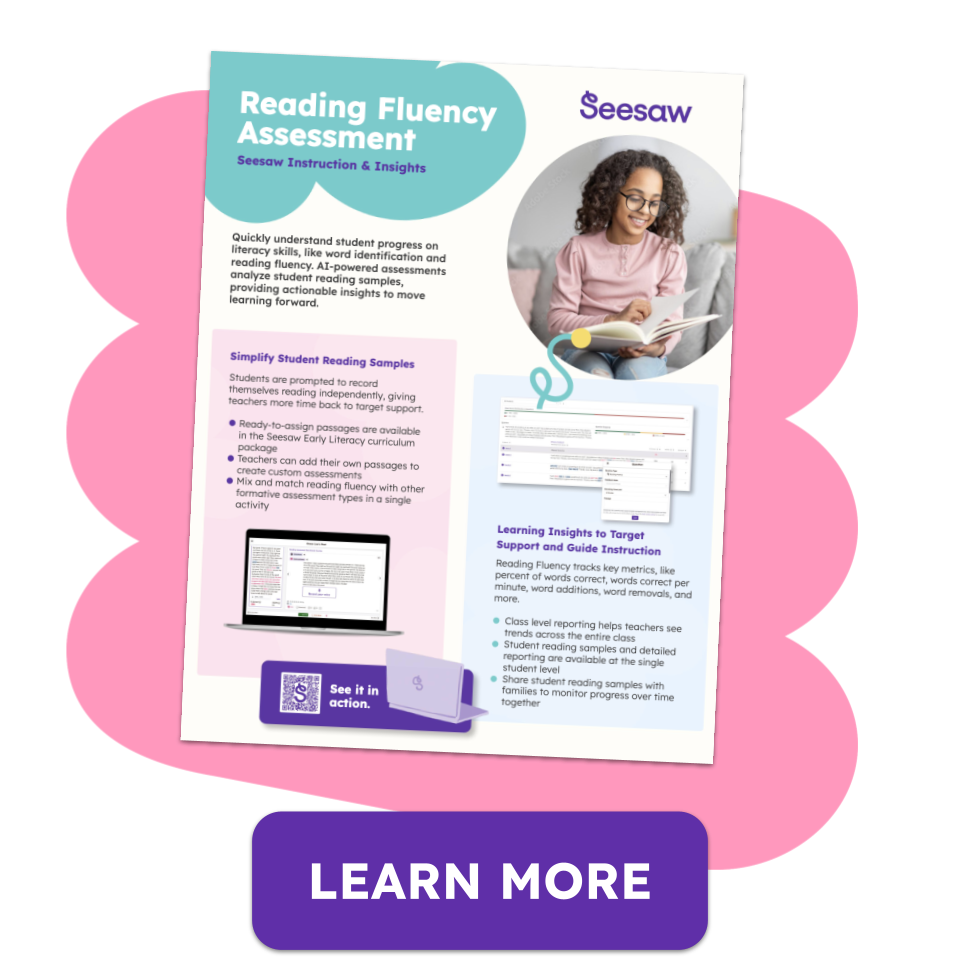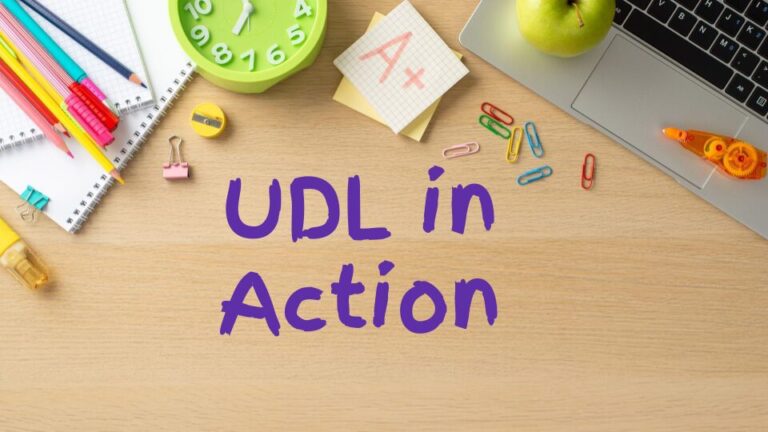Assessment in education isn’t just about grades, it’s about insight. For K–5 teachers, choosing the right types of assessment can transform your instruction. You have purview into student needs, the ability to address misconceptions, and tools to spark measurable growth.
This guide breaks down four of the most common types of assessment in elementary: diagnostic, formative, summative, and performance-based. Each type of assessment comes with real-world classroom examples to help you visualize how this educational assessment is put into practice. If you’re looking to build confidence in your K–5 class assessment strategies, Seesaw is here to help!
Diagnostic assessment in education
What it is: A diagnostic educational assessment is used before instruction of that specific content is delivered. This is designed to assess prior knowledge, strength, and areas for growth within that specific learning target. You can then use the results of this type of assessment to deliver targeted instruction after this knowledge is gathered.
Class assessment example: It is the beginning of the year, and students are coming into school for the first time. The teacher welcomes students and then has them work on a single page of math problems. This page is strategically designed to diagnose what math facts students are proficient with and which they are not. After the class completes this assessment, the teacher uses a key and guide to put students into groups based on the math facts they have yet to master.
 Summative assessment in education
Summative assessment in education
What it is: A summative educational assessment is given at the end of a unit or a term to measure students’ mastery of content they were taught. This is often used for grading and reporting on progress toward mastery of academic standards.
Classroom assessment example: A 5th grade science class has just finished learning about natural disasters. Students spent time building dioramas, experiencing simulations, and presenting about each natural disaster. To close the unit, the teacher uses a summative assessment unit from the curriculum as a measure of growth. This class assessment is a few pages long and is a comprehensive measure of understanding about natural disasters. The teacher scores each assessment and reports this in the schools grading system that is made transparent to families.
Formative assessment in education
What it is: Formative educational assessments are ongoing forms of assessment that happen during instruction. They are designed to monitor students progress, and address misconceptions, extend knowledge, and provide purposeful feedback. This type of assessment then helps inform the next steps in teaching.
Classroom assessment example: A kindergarten teacher is working on sight words. The students practice each word as a group, and are then tasked with practicing writing the words on their own while the teacher walks around providing support. After the lesson, the teacher asks the class to share how they felt about writing these words on their own. The students close their eyes and hold up a thumbs up or thumbs down. The teacher gathers this, along with their observational data, and uses this to gather a small group later in the day to support writing these sight words.
Performance-based assessment in education
What it is: A performance-based educational assessment is where students demonstrate their understanding through something they create. This can be a product, a task, or a performance. These are often open ended scenarios that relate to real world applications, perfect for primary grade evaluation that values creativity and communication.
Classroom assessment example: A 3rd grade class is learning about communities and the roles of community helpers in social studies. Instead of a written test, the teacher assigns a project where each student chooses a community role (like firefighter, doctor, or librarian) and creates a short skit, poster, or interview presentation. Students present their work to the class, showing what they’ve learned about that helper’s responsibilities and contributions. The teacher uses a rubric to assess content understanding, creativity, and communication skills.
How to Become an Educational Assessment Pro
- Leverage tools that automate your workflow. No matter what type of assessment you’re using, tools that streamline the process help you focus on what matters most: teaching. Many K–5 class assessment strategies can be enhanced through digital tools that save time and organize data efficiently.
- Balance your approach. Relying too heavily on one form of educational assessment won’t give you the full picture. Embed different class assessment types throughout the year to build a more complete understanding of student progress.
- Be mindful of over-assessing and under-assessing. Measuring growth takes time and balance. Formative class assessments should happen daily to guide instruction and prevent misconceptions, while summative assessments should happen at the end of a unit or term to evaluate learning over time.
- Consider your students’ learning styles. Students don’t always show what they know the same way. Emotional, developmental, and environmental factors can influence their performance. Use your professional judgment when reviewing data. Sometimes, what looks like a lack of understanding is actually something deeper.
Assessing What Matters
Assessment in education is about so much more than testing. It helps teachers understand their students and refine their craft. From diagnosing readiness to measuring mastery, these elementary assessment types give you the insight you need to teach smarter, not harder.
Seesaw’s flexible assessment tools have been created to help teachers embed best practices into their year. Your students will grow, your instruction will improve, and your confidence in K–5 assessment strategies will soar.





